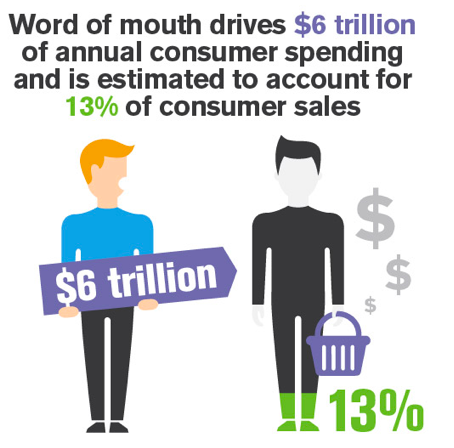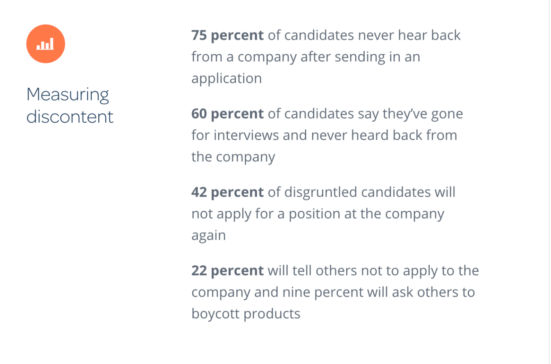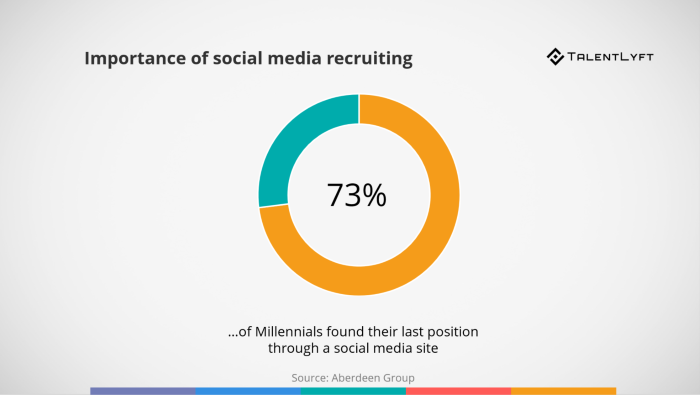Picture this: you want to sail to Calais in Northern France from Dover in the south of England. You don’t know how to sail a boat. So would you do next?
Would you trust just any passer-by to sail your boat safely across to France? Can you trust an inexperienced guy with your life in the middle of the ocean? No?
Well, it’s the same with companies. The right people in your company, who know the stuff they do and are the right fit for it. You can’t just hire a random person and hope that they do a good job, because that’s not how a business can run. Business need to hire the right talent who knows what he’s doing with his/her work.
In his book Good to Great, Jim Collins says that its crucial to ask, ‘First who, then what?’.
Here, Jim Collins famously compares a business to a bus and the business leader to a bus driver. His strategy is simple, and his logic, unflinching.
He points out:
- Get the right people (employees) on the bus (business)
- Encourage right people (employees) to get into the right seats (job roles)
- Get the wrong people off the bus (fire or lay-off undeserving employees)
- Put who (which employee to turn to) before what (what action to take)
But why is hiring the right talent being so stressed upon? Can’t it be done by an average employee by simple training? The answer is ‘No’.
A recent study of a sample size of 600,000 revealed that high performers are 400% more productive than average ones.
And it doesn’t stop at that.
Turns out, in case of high-complexity interaction-intensive work, high performers are up to 800% more productive.
Clearly, hiring the right talent can make all the difference in the world. But how to do that? How to navigate the pitfalls and come up with the strategy to hire the best business talents?
Here are some tips on how to go about it:
Tips to Hire Right Talent
1. King-size treatment to candidates
In the recruitment process, you can’t recruit every applicant. Of course not. So why should how you treat the rejected candidates matter?
It matters, and quite a lot actually. Not only the selected ones, but you need to treat each and every applicant like they are your customers. Because they actually are.
You see, just as word of mouth marketing drives around $6 trillion of customer spending all around the world globally and also helps a lot in improving your brand image.
Everyone has friends, and you need all the contacts of your applicant pool to be interested in what you have to offer. Unless you increase your applicant pool, you aren’t likely to attract top talent, and that is only going to happen when you improve your image.
Hence, meting out king-size treatment to everyone is important. Make sure they get emails about why they were selected/ rejected and get necessary closure. Get them involved with your company specifics. Make them feel important, irrespective of the result.
No matter the outcome, your treatment will make all the difference whether or not they act as your voice in front of their contacts.
2. Collect candidate feedback
This is an extremely important step to feel the general pulse of the applicants.
But unfortunately, it’s something that most recruiters are not doing. In fact, 78% of applicants say that they’ve never been asked for an applicant experience feedback by the company. Only 25% of companies actively ask for feedback from candidates, and that’s a much lower percentage than it should be.
There are exemplary benefits of candidate feedback that most companies tend to ignore.
Feedback can:
- Enable you to understand the market
- Help you benchmark yourself against other companies in the same business
- Allows you to make the employment process more cutting-edge
- Eventually, help you recruit great talent
- Help you build and sustain an employee-employer relationship
All of these are necessary to differentiate yourself in the market place and carve out a leadership position for yourself in the industry.
3. Respond to queries immediately
Suppose a client is looking for advice or wants to get a pressing job done. They want an audience with your right away. So what do you? Do you keep them waiting for weeks on end? Of course not. You immediately try to address the issues of the client and take the partnership forward.
You have to think in the exact same way if you want to hire the right talent. You’ve got to be fast and you have got to engage them.
A survey by Glassdoor revealed that around 69% of interested candidates are likely to actually go ahead and apply for a job if their queries are engaged actively. You have to take questions, solve queries and be able to positively influence interested candidates.
If you’re looking for creative ways to engage your candidates faster, the answer is simple: automate the process! Check out VidCruiter to learn about how you can send automated digital interview requests to every single candidate right away and snatch top talent before your competition does.
Additionally, it is crucial that the technical issues don’t make this process more problematic. That’s why, depending on whether you prefer to use email or send documents by fax, you should find a reliable internet provider, or consider using online fax services that would help you avoid dealing with fax machines, which unfortunately break quite often. Thankfully, it is 2021, and you can send faxes using only your mobile phone or create fax cover letters with your tablet.
Secondly, you have to display speed. A recent survey by Office Vibe reports that the best candidates are out of bounds within 10 days. This means the top interested candidates are getting employed within 10 days of applying.
Here are some other eye-opening statistics:
So, if you want to fight for the top talent, you’ve got to find that irrepressible need for speed as well.
4. Target the right people
Every company has a Mission and Vision, abiding by which they function. They encapsulate the core values of the company and say a lot about the alignment and direction of the company.
Targeting the people who are best aligned with the mission and vision of your company is what separates a good company from a great one. And it’s not about money, contrary to popular notion.
According to Jim Collins, ‘The right people can often attract money, but money by itself can never attract the right people. Money is a commodity; talent is not’.
It means that simply paying higher than your competition is no guarantee of recruiting the best that is out there. For hiring the best, you need to ensure your core values align with each other. The best employees are not motivated as much by their package as they are by the mission of the company they serve. The best will always be motivated by what they do, and what targets they achieve. In short, invest in hiring the best fit candidate for a long-term and sustainable relationship.
5. Use technology
In this age of digitalization, it seems almost insane not to leverage the perks it has to offer. And the perks are huge.
Let’s look at how you can be a game-changer by using technology. In the book ‘Moneyball’, Michael Lewis talks about the real-life General Manager of Oakland Athletics, Billy Beane. He transformed the small-budget, nondescript baseball team filled with a bunch of rookies, into one of the finest baseball teams in the USA, against overwhelming odds.
How did he do that? By using data, and a lot of data analytics.
It is a real-life example of data analytics inferring something much more accurately than the human mind and intelligence is capable of.
More and more companies are beginning to take advantage of the power of data analytics in their recruitment process, and are getting fantastic results.
Here’s an example:
The waste management company Richfield Management screens applicants over many traits to locate the ones most likely to abuse workers’ compensation. The compensation claims have reduced by 68% since then.
6. Are you using the right platform?
Using the right platform and being present there can make a whole lot of difference to the quality of candidates you are reaching out to. That can mean appealing to the right set of candidates, and also getting to know who the candidates are once you remove their resume.
According to Rosemary Haefner of CareerBuilder, ‘Tools such as Facebook and Twitter enable employers to get a glimpse of who candidates are outside the confines of a resume or cover letter’.
These help you evaluate a candidate beyond their qualifications, and give you an idea about what their peers think about them, how they can mix with people, whether they are team players or not, and helps you take that final decision on recruitment. Put your detective skills to full use.
And in recent times, social media sites account for 84% of recruitment by organizations. For instance, LinkedIn connects paid account holders to potentially millions of interested recruiters, all vying for the same talent.
Using the right platform to hire the right talent is just as important as the procedures that follow afterwards. At present, 15% of job seekers land a job through social media. It is in your interest to be present there.
This statistic perfectly tells just how important social media is if you want to hire the right talent:
Talent vs work ethic?
It’s a debate that has many opinionated answers. But a recent survey has picked up a winner, and the winner is work ethic.
In the survey, an overwhelming majority of managers said that attitude and work ethic are the most important considerations while choosing a candidate.
Business managers nowadays are looking for people who are quick learners. Those who can learn, relearn and unlearn. The ideal employee is someone who has the specific company culture fit and works ethic to back it up. Because more and more managers nowadays think that employees can be taught hard technical skills, but soft skills are inherent and is largely internal.
Summing it all up
If applied properly, the tips mentioned above will help you hire the right talent for your company!
Clearly, choosing the right employee and talent is no walk in the park.
It requires careful consideration of the roles being offered, the desired traits of the candidate and how good a fit the candidate is with the company culture.
All in all, if you want to hire the right talent for your company if you have work cut out for you.
Hiring the wrong candidate is not at all a trifling matter, nor an inexpensive one. It has hefty financial consequences. A bad hire can cost a company anywhere between $7000 to $10,000 on an average, for an entry-level position. It runs up in excess of $40,000, in case of a manager. The price is extremely steep.
It is thus better to be slow and steady and choose the perfect candidate, rather than speeding up the process and ending up with a wrong hire. Hiring the right talent has long-term implications on your business that you must take seriously.
Which of these tips did you find most useful to help you hire the right talent?






